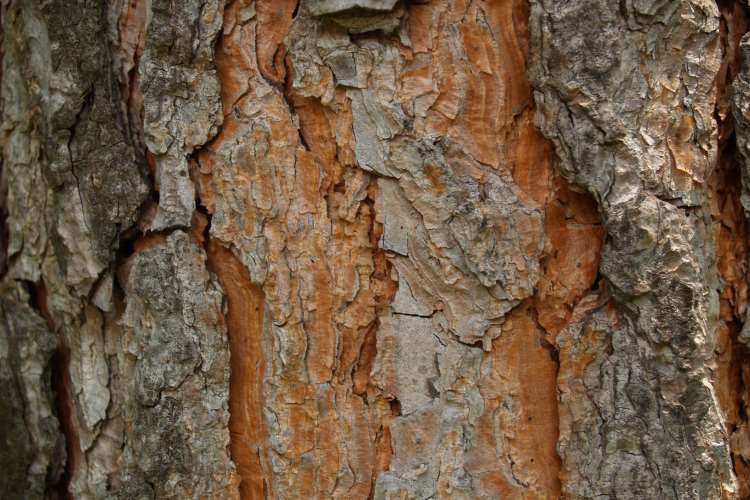
Stone Pine
Pinus pinea
Family and description
From the Pinaceae family, the stone pine is a slow-growing, coniferous evergreen tree that grows up to a height of 25 m.
The stone pine typically has a broad umbrella-like canopy. Branched only at the top, its bark is reddish-gray, deeply vertically fissured which disaggregates into plaques. The branches are initially gray becoming brown with age.
The leaves are acicular (needle-like), slightly twisted, about 10 to 20 cm long. They are grouped in pairs, surrounded at the base by a sheath, persisting on the tree for 3 years.
Reproduction takes place in April. The male organs are ellipsoidal, with rounded pollinated scales, at the ends of the branches. The female ones look like little pine cones.
The cones are only produced on trees older than 3 years. It appears solitary or in groups of 2 to 3. It is ovoid in shape and 8 to 15 cm in length. Among the scales are the seeds, pine nuts, with a woody covering and a short and deciduous wing.
It has a root system that spreads across an area far superior to its crown.
Origin and habitat
Originally from the Mediterranean region, occurring in southern Europe and western Asia, it is also naturalized in some African countries. In Portugal it is widely used in monospecific stands in the coastal areas, in mixed settlements in the most interior areas or for ornamental purposes.
It is a species that tolerates summer dryness, cold temperatures in areas of low and medium precipitation, sea winds and strong winds but is not resistant to shade or snow.
Native to light sandy soils, it supports clay, acidic and schist soils and is not demanding on soil nutrients. It is better suited to well-ventilated, deep, fresh, slightly acidic soils with a shallow water table.
This species can occur at altitudes of up to 1000 m, being more frequent in Portugal at altitudes of up to 88 m and at distances of between 64 m and 77 km from the sea.
Uses and curiosities
Stone pines have an average longevity of 200 years, with exceptional specimens reaching the age of 500 years. They spread by the dissemination of seeds.
Pine nuts are very nutritious, much appreciated for human consumption and are of high commercial value. The stone pine’s wood is used in carpentry and shipbuilding and produces resin. It is less exploited than maritime pine wood. It plays an important role in the conservation of the dune system and, at the same time, allows forest yields from less fertile soils.
